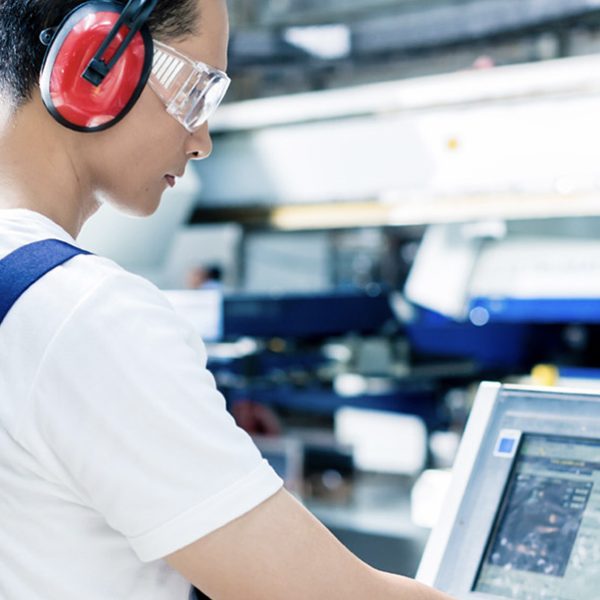COURSE: CNC MACHINIST - GES778
Online CNC Training
Become a CNC Machinist
As the manufacturing industry becomes more automated, many machinist are staying ahead of the curve by learning how to use CNC machines. If you want to advance your manufacturing career, this 100% online course will train you to operate cutting-edge CNC machines.
JOB OUTLOOK FOR CNC MACHINISTS
- According to the US Bureau of Labor Statistics (BLS), machinists earn almost $45,750 per year, on average. Experienced CNC machinists make between $50,000 and $80,000 annually.
- The BLS notes that job demand for machinists will grow 1-2% over the next decade. However, many of these jobs will require knowledge of CNC machines and automation.
- Deloitte estimates that as many as 2 million advanced manufacturing jobs may go unfilled between now and 2025.
CNC MACHINIST FAQS
While CNC machining and conventional machining both refer to the process of shaping a raw material into a specific part, the difference between the two processes is that CNC machines are automated while conventional machines are manual or may require multiple machines to cut different a single part.
CNC machinists are expected to:
- Interpret designs of parts to be machined
- Use technical calculations and models to program a CNC machine
- Choose tools or attachments required for a product order
- Set manufacturing metrics such as tolerance levels or cutting speeds
- Maintain and upgrade CNC machines to optimize productivity
- Validate a machine’s output based on the technical standards for a project
- Operate machines under computer numerical control, including lathes, mills, presses, and drills, 3D printers, glass cutters and more
Yes. Technologies like artificial intelligence (AI), robotics, and the Internet of Things (IoT) are now common in the manufacturing industry, so machinist need to keep pace with new changes
Course Objectives
- Master the basics of CNC controls and programming
- Understand metallurgy and machining and grinding processes
- Learn inspection methods and workholding principles
- Understand the basics of Six Sigma, 5S, Lean, and TPM
Prerequisites and Requirements
There are no prerequisites to take this course.
Curriculum
Certified Administrative Professional
Intro to workholding; supporting and locating principles and devices 107; clamping basics, chucks, collets and vises
Fractions and decimals, units of measurement and basics of tolerance; algebra, geometry, trigonometry and blueprint reading
Introduction to GD&T, optical comparators and CMMs; standards for inspecting and calibrating holes, threads and surfaces
Basics of presses, manual mills and engine lathes; introduction to CNC machines, G-Code programming and Haas, Fanuc and Mazak machines
OSHA, personal protective equipment, SDS and hazard communication; hand and power tool safety, safety for lifting devices and powered industrial truck safety
Physical and mechanical properties of metal manufacturing; classification of steel, essentials of heat treatment of steel and hardness testing
Basic cutting theory and processes; introduction to metal cutting fluids and tool materials
Lean manufacturing, 5S and continuous process improvement; Six Sigma, conducting Kaizen events and value stream mapping
Grinding processes and safety; grinding ferrous and nonferrous metals
Instructors
This is a completely self-pace course. Additional support will be provided through email and phone.
Registration and Enrollment
This course is 100% online. Start anytime.

